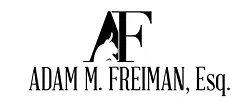Bankruptcy filings can sometimes take a few months to get going. But what if you need immediate relief? If you are facing wage garnishment or may lose your car or home, you can’t wait several months for a bankruptcy filing to kick in.
This is where an emergency bankruptcy filing comes in. An emergency bankruptcy filing is when you file a case quickly to stop a foreclosure or repossession. It can also help with preventing wage garnishment. It is a streamlined process. Only the minimum required forms and information are used to get a bankruptcy case going and quickly obtain an automatic stay. This is also known as a skeleton filing.
Required Paperwork
While an emergency bankruptcy filing requires minimal information, you still need to complete all the same paperwork as you would in a regular bankruptcy filing. You must file the additional forms within 14 days after the emergency filing. Otherwise, your creditors can resume collection efforts, and your case will be dismissed. You do not want this to happen, so do not forget this important step.
Most people file emergency bankruptcy cases to prevent an impending collection action. Many people do not file for bankruptcy as a spur-of-the-moment act. They tend to spend a lot of time researching and deliberating before making a decision. Even after you’ve decided to file, it can take time to collect documents and fill out the forms.
Keep in mind that while an emergency bankruptcy filing can start the automatic stay, which can stop further collection efforts, it cannot undo any actions that have already happened. Because of this, if you are having financial difficulties and think your assets are at risk, you need to act quickly. If you don’t have enough time to put all your paperwork together, at least file an emergency bankruptcy filing. This will shield you from your creditors and prevent a wage garnishment, repossession, bank levy, or foreclosure while you finish filling out your bankruptcy forms.
Choosing the correct chapter
As with any bankruptcy, you need to choose the right one: Chapter 7 or Chapter 13. Because emergency bankruptcy filings are often used to stop repossessions or foreclosures, Chapter 13 bankruptcy usually makes more sense. If you are behind on car payments or mortgage payments, a Chapter 13 repayment plan can bring these payments current.
You also need to make sure you qualify. To file a Chapter 7 bankruptcy, you will have to pass a means test. While you are not required to submit the means test forms in an emergency filing, you will have to within 14 days, so it’s best to see if you qualify now.
Qualifying Factors
You also may not qualify if you have filed for bankruptcy in the past. Under the bankruptcy code, there are waiting periods involved. You must wait eight years between Chapter 7 bankruptcies and two years between Chapter 13 bankruptcies. When going from Chapter 7 to Chapter 13, the wait time is four years. When going from Chapter 13 to Chapter 7, the wait time is a little longer, at six years.
Get Expert Guidance
When you need quick financial help, an emergency bankruptcy filing may be possible. You can avoid losing your assets this way.
At the Law Offices of Adam M. Freiman, we specialize in a range of bankruptcy services designed to help our clients navigate their financial challenges. With our expert guidance, you can regain control of your financial future quickly and easily. To schedule a consultation, fill out the online form or call (410) 486-3500.







